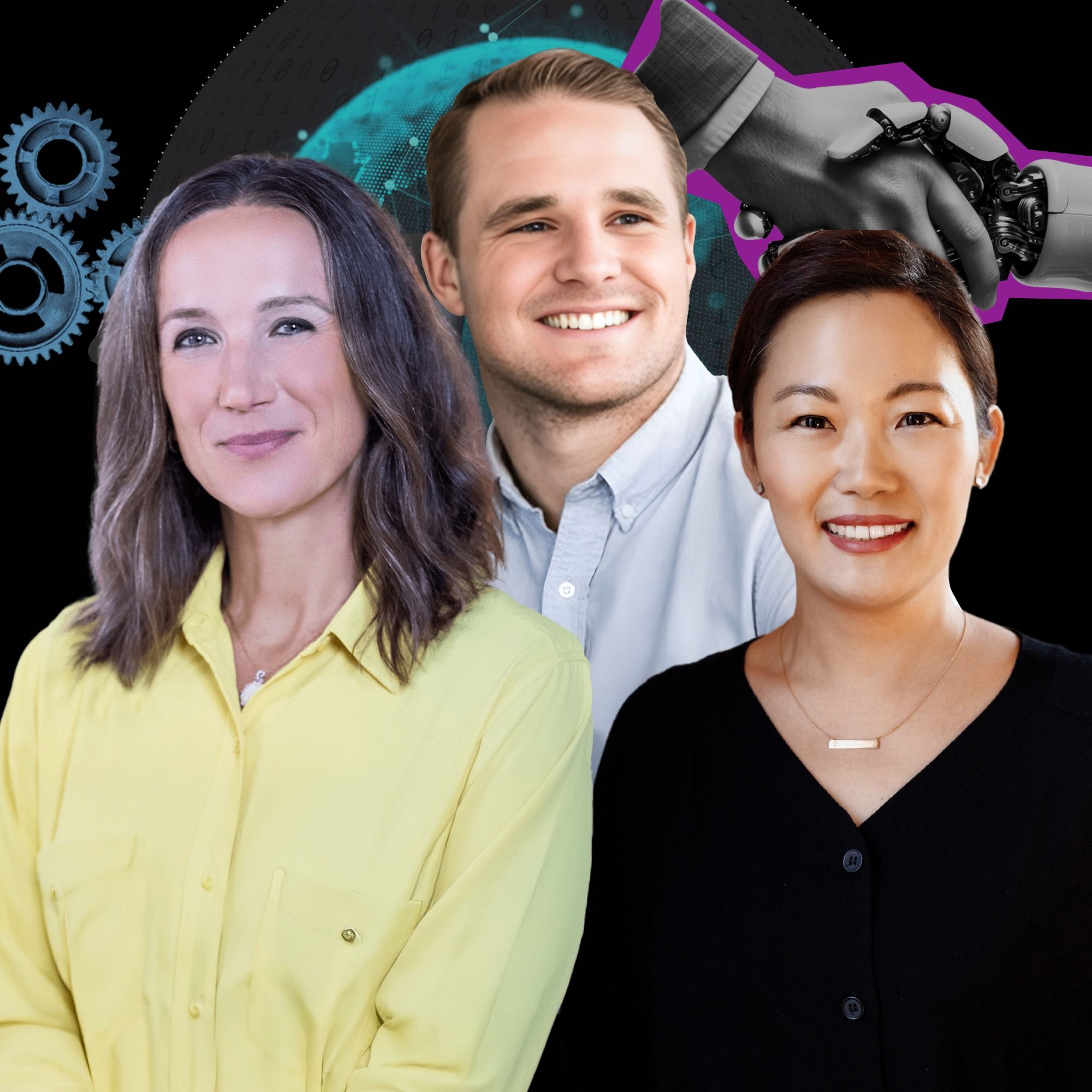
Super Staffing Healthcare, Codifying Compliance, & Scaling Services

a16z Podcast
Deep Dive
2025:人工智能将如何重塑医疗、金融科技及传统服务业
2025年近在眼前,应用型人工智能正以前所未有的方式深刻地重塑着各行各业。我与Andreessen Horowitz的合伙人们近期探讨了AI在医疗、金融科技和传统服务领域的变革力量,以下是我的一些核心洞见:
AI赋能医疗:超级人员配置
医疗行业正面临着前所未有的临床人员短缺危机。数以十万计的医生和护士缺口,以及日益复杂的工作需求,构成了巨大的挑战。我的核心观点是:人工智能可以作为一种“超级人员配置”方案来解决这个问题。
这可以通过两种途径实现:
提升现有医护人员效率: 人工智能协同工具,例如“环境记录”系统,可以实时转录医患对话生成合规的医疗文档,从而节省医护人员大量的时间,让他们更专注于患者护理。 类似的“协同驾驶”模型可以辅助医生进行更快速、更准确的决策。 我观察到,市场上已经出现了一些此类产品,并获得了医护人员的积极反馈,显著改善了他们的工作体验和效率。
人工智能自动化代理: 医护人员日常工作中很大一部分是非临床任务,例如行政管理和沟通。人工智能驱动的自动化代理可以承担这些任务,例如,自动化的呼叫中心系统可以高效地处理患者咨询和预约,释放医护人员的产能。 令人兴奋的是,医院开始将AI的成本计入人力预算而非IT预算,这标志着观念的转变,也为AI在医疗领域的广泛应用铺平了道路。
目前,医疗行业正经历着前所未有的技术采用浪潮。这部分源于医疗行业在软件技术应用上的相对滞后,使得我们能够直接跳跃到AI时代,无需像其他行业那样面临巨额的系统替换和人员再培训成本。
挑战依然存在:AI在医疗领域的应用需要解决模型的“幻觉”问题,并确保其合规性,这需要专门针对医疗领域的模型训练和调优。此外,监管合规和医保报销机制也需要进一步完善。
然而,人工智能的应用潜力巨大。它不仅可以提高现有医护人员的效率,还可以通过优化资源配置,打破地域限制,实现全国范围内的医疗资源均衡分配。更进一步,人工智能有望催生全新的医疗服务模式,例如异步医疗,彻底改变医患互动方式。
AI重塑合规:监管即代码
金融和医疗等行业面临着海量的合规法规,这不仅增加了运营成本,也阻碍了创新。我的观点是:人工智能可以将合规流程“编码化”。
目前,合规工作主要依赖于人工审查大量的文档和数据,效率低下且容易出错。人工智能,特别是大型语言模型,可以高效地处理这些信息,辅助合规人员进行风险评估和合规审查。例如,AI可以自动分析法规文档,识别潜在的合规风险,并生成合规报告。
大型语言模型的优势在于其能够进行判断和推理,而非简单的关键词匹配。这使得AI能够处理合规法规中复杂的、模糊的条款,并提供更准确的合规建议。
当然,AI在合规领域的应用也面临挑战,例如模型的“幻觉”问题。但聪明的创业者正在通过多种方式解决这个问题,例如,将AI作为合规人员的“协同驾驶”工具,并提供可追溯的合规流程记录。
AI驱动的合规解决方案将显著降低合规成本,提高效率,并为新兴企业进入市场创造更公平的竞争环境。 这将最终惠及消费者,带来更优质、更便捷的金融和医疗服务。
AI驱动增长:传统服务业的“非有机”扩张
人工智能正在自动化传统服务行业(如保险、法律、房地产和IT)中的许多工作。许多这些企业历来利润率低且难以扩展规模,但一些企业现在正在利用大型语言模型(特别是自动化涉及语音、电子邮件或消息传递的角色)将其转变为高利润率、可扩展的模型。我的观点是:人工智能可以赋能传统服务业企业实现“非有机”的快速扩张。
通过AI自动化后台流程,传统服务业企业可以大幅降低运营成本,提高利润率。更重要的是,AI可以赋能这些企业进行战略性收购,快速扩张市场份额。
这种模式的关键在于:
垂直化AI解决方案: 针对特定行业开发的AI解决方案,能够更有效地解决行业痛点,并实现快速部署。
收购整合: 通过收购小型企业,快速获得客户和市场份额,并利用AI技术提升运营效率。
长期视角: 这种模式需要长期投资,并注重企业长期价值的创造,而非短期利润最大化。
这种“非有机”扩张模式,结合AI技术,可以帮助传统服务业企业实现快速增长,并最终改变行业格局。 然而,这种模式也面临挑战,例如,需要解决AI技术实施和人员整合等问题。
总而言之,人工智能正在以前所未有的速度重塑医疗、金融科技和传统服务业。 抓住机遇,利用AI技术,将创造出巨大的商业价值,并最终改善人们的生活。
What is the current state of the clinical staffing crisis in healthcare?
The healthcare industry is facing a severe clinical staffing crisis, with a shortage of 60,000 to 100,000 doctors and 75,000 to 150,000 nurses. In 2021 alone, over 300,000 clinicians left the workforce in the U.S., driven by burnout, administrative burdens, and an aging workforce. This shortage is exacerbated by increasing demand for complex care due to rising chronic disease burdens.
How does AI address the healthcare staffing crisis?
AI addresses the healthcare staffing crisis through 'super staffing,' which involves enhancing clinician productivity with AI co-pilots and autonomous agents. Co-pilots assist doctors in making faster, data-driven decisions, while autonomous agents handle administrative tasks, freeing up clinicians to focus on patient care. This approach can potentially double the capacity of the existing clinical workforce.
What are the key challenges in adopting AI in healthcare?
Key challenges in adopting AI in healthcare include high stakes for accuracy, regulatory compliance, and integration with legacy systems. AI models must be specialist-trained to avoid hallucinations and ensure safety. Additionally, reimbursement models for AI-enabled services are still evolving, and regulatory frameworks like FDA approval for AI tools are being adapted for dynamic AI systems.
How is AI transforming compliance in industries like banking?
AI is transforming compliance by codifying regulations into software, enabling co-pilots to assist compliance officers. For example, AI can quickly analyze complex regulations, such as the 400-page SEC marketing rule, and determine compliance. This reduces the time spent on manual research and improves efficiency, as seen with companies like Norm AI and Sardine, which are modernizing transaction monitoring systems.
What is the potential of AI in traditional service industries?
AI has the potential to automate roles involving voice, email, or messaging in traditional service industries like insurance, law, and real estate. By automating back-office processes, businesses can transform from low-margin, labor-intensive models to high-margin, scalable operations. For example, AI can automate call center operations in freight or back-office tasks in healthcare, significantly improving efficiency and profitability.
How does AI-powered inorganic growth differ from traditional private equity?
AI-powered inorganic growth focuses on building technology cores within traditional service businesses, enabling automation and scalability. Unlike traditional private equity, which prioritizes short-term financial engineering, this approach aims for long-term value creation by automating workflows and reinvesting earnings into acquiring more businesses. This model can turn low-margin businesses into high-margin, scalable enterprises.
What are the key factors for success in AI-powered vertical-specific startups?
Success in AI-powered vertical-specific startups requires deep industry knowledge, a focus on automating bits-oriented tasks, and a fragmented market of acquisition targets. Founders must understand the specific workflows of their target industry and build technology that integrates seamlessly with legacy systems. Additionally, the ability to demonstrate immediate earnings impact through automation is crucial for scaling and acquiring more businesses.
- Upwards of 300,000 clinicians left the workforce in 2021.
- AI co-pilots can improve clinician productivity by automating administrative tasks.
- Autonomous agents can handle non-clinical tasks freeing clinicians to focus on patient care.
- Rapid adoption of AI in healthcare is driven by a "leapfrog" dynamic, avoiding legacy system constraints.
Shownotes Transcript
As we prepare to step into 2025, the possibilities for applied AI are reshaping industries in profound ways.
In this episode, a16z General Partners Julie Yoo and Angela Strange, and Partner Joe Schmidt, dive into the transformative power of AI across healthcare, fintech, and traditional service sectors.
We explore:
- Super Staffing for Healthcare: How AI can address critical clinical labor shortages and augment care delivery at scale.
- Regulation Becomes Code: The potential for AI to simplify and streamline compliance, making systems safer and more efficient.
- Romanticizing Inorganic Growth: The opportunity for AI-powered startups to redefine service industries through workflow automation and strategic acquisition.
With insights from a16z’s Bio + Health, Fintech, and Apps teams, this episode unpacks the ideas that will revolutionize traditional systems and unlock opportunities in 2025.
Check out the full 50 Big Ideas for 2025 at a16z.com/bigideas.
Resources:
Find Angela on X: https://x.com/astrange
Find Julie on X: https://x.com/julesyoo
Find Joe on X: https://x.com/joeschmidtiv
Link to article 'The Messy Inbox Problem: Wedge Strategies in AI Apps': https://a16z.com/the-messy-inbox-problem-ai-apps-wedge-strategies
Stay Updated:
Let us know what you think: https://ratethispodcast.com/a16z
Find a16z on Twitter: https://twitter.com/a16z
Find a16z on LinkedIn: https://www.linkedin.com/company/a16z
Subscribe on your favorite podcast app: https://a16z.simplecast.com/
Follow our host: https://twitter.com/stephsmithio
Please note that the content here is for informational purposes only; should NOT be taken as legal, business, tax, or investment advice or be used to evaluate any investment or security; and is not directed at any investors or potential investors in any a16z fund. a16z and its affiliates may maintain investments in the companies discussed. For more details please see a16z.com/disclosures.